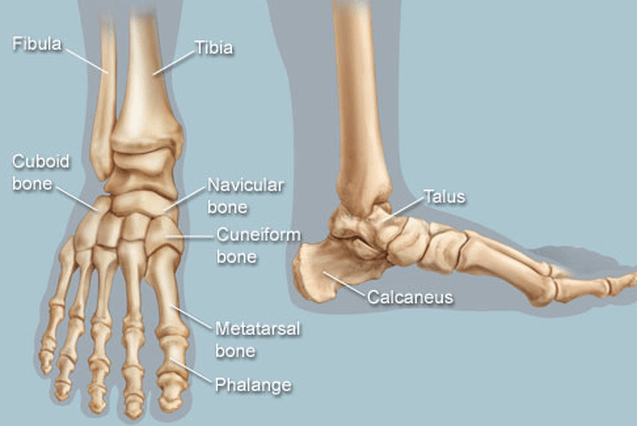Sports Injuries and Management
Stress Fractures A Runners Nightmare
What Are Stress Fractures?
In my opinion suffering stress fractures would have to be one of the most frustrating injuries a runner can experience. Since when diagnosed with a stress fracture, the entry level running ban starts at about 6 weeks of rest. Often some of this period may be spent in a boot and/or on crutches to unload and immobilise the area to allow healing. Stress fractures were initially called “march fractures” as they were first noted in Prussian soldiers who marched excessively. A “stress fracture” is typically a small crack in the bone and doesn’t extend completely through the bone. These fractures can occur in many bones of the body, runners are particularly but not exclusively susceptible. With runners when you run and increase your training load your muscles and heart and lungs… aren’t the only things that need to adapt and get stronger, so do your bones. If the repeated pounding associated with running overloads the bodies ability to adapt to the applied stress, then stress reactions of the bone may occur and these progress to stress fractures.
What Are The Common Running Stress Fractures?
Runners can experience a variety of stress fractures. The most common being in the:
- Tibia – The tibia is the large long bone of the shin, on the inside of the lower leg and is the most common site in the body for these types of fractures.
- Metatarsals – These are the long bones in the forefoot, there are 5 of them on each foot and the most common sites for stress fractures are of the second and third metatarsals. Metatarsal are named where by the big toe is labeled the first metatarsal and the little toe is the fifth.
- Femur – The femur is the large thigh bone above the knee, stress fractures of this bone may occur in the shaft of the bone, or at the neck of femur, at the level of the hip. Fractures here from over load running and in the pubic bone of the pelvis will often cause groin pain and can be difficult to diagnose and often missed by treating practitioners.
- Fibula – Stress fractures here aren’t particularly common and are certainly less common than in the tibia. The fibula is the long thinner outside shin bone, and in the lower leg the major weight bearing bone is the tibia and is subsequently the most common bone for runners to suffer a fracture.
- Navicular – This bone is one of the small bones of the mid foot, the navicular is positioned on the inside of the mid foot around the middle of the arch of the foot and unsupportive footwear, or poor mid foot biomechanics associated with increased running load can put the runner at risk of a navicular stress reaction.
- Calcaneus – The calcaneus is the heel bone and although not particularly common runners can still experience fractures in the heel.
- Pars Intraarticularis – These refer to lower back stress fractures, also can be referred to as a spondylolysis or spondylolisthesis, runners can experience them but probably more common for this sort of fracture to be associated with fast bowlers in cricket or in sports like volley ball with the jumping and spiking.
Potential Causes
Stress fractures running could be considered to have two main causes, simply too much force on a bone and underlying weakness of the bone structure to which the force is applied. Both of these causes may have sub-factors as to why the bone stress is too great and why weakness exists in the bone to start with. Basically these causes can result from a number of different factors and if the repeated strain and force to the bone is greater than the strength of the bone, then the individual may well develop a stress fracture.
Forces applied when running can be impact loading forces, or active forces. Impact loading forces are referring to the degree of shock that travels up your foot and leg when the runner initially contacts the ground. Active forces and the forces which are generated when the runner is pushing their body off the ground (the forces their muscles and tendons generate when creating movement).
The Role Of Bone Density
When considering potential causes of stress fractures, bone density and bone shape may play a roll. A family history of osteopenia, or osteoporosis conditions respectively meaning that an individual has a lower than average, or significantly lower than average bone density may be a risk factor for stress fractures running specifically in women, as men are less likely to have either osteopenia, or osteoporosis. In females bone density and menstrual irregularities play a role in having a greater risk of suffering stress fractures. It is possible that stress fractures running may be indicative of underlying health issues, if a female is amenhorreic (meaning they are missing their monthly period), this can impact immediate injury risk and as well as that impact the bone density for the rest of their life. So questioning around a family history of bone density deficiency and a personal history of an absence of menstruation are important lines of questioning in females who may have a suspected stress fracture.
Disclaimer: Sydney Physio Clinic provides this information as an educational service and is not intended to serve as medical advice. Anyone seeking specific advice or assistance on Stress Fractures A Runners Nightmare should consult his or her general practitioner, physiotherapist, sports medicine specialist, orthopedic surgeon or otherwise appropriately skilled practitioner.



